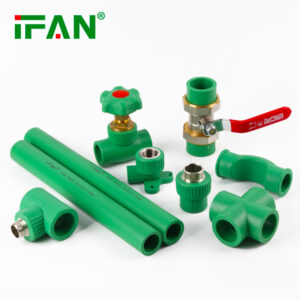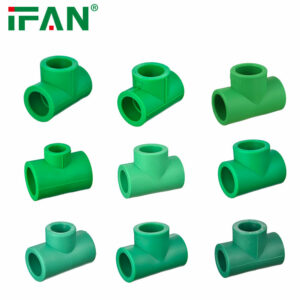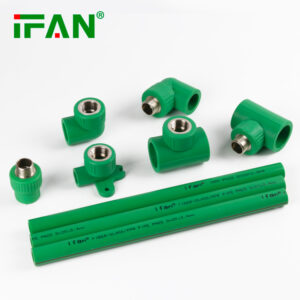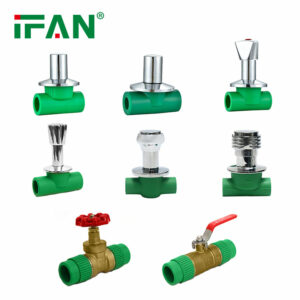
ASTM F2389 Why PPR Fittings Are the Future of Plumbing
Whatsapp Us
Share
Description
IFAN factory 30+ years manufacture experience support color /size customization support free sample.Welcome to consult for catalog and free samples.This is our Facebook Website:www.facebook.com,Click to watch IFAN’s product video.Compared with Tomex products, our IFAN products from quality to price are your best choice, welcome to buy!
Polypropylene Random Copolymer (PPR) fittings have become a game-changer in the plumbing industry. Offering an array of benefits ranging from durability to cost-effectiveness, PPR fittings are rapidly becoming the preferred choice for modern plumbing systems. In this article, we’ll explore why PPR fittings are the future of plumbing, focusing on their advantages and answering some frequently asked questions.
What Are PPR Fittings?
PPR fittings are essential components used to join PPR pipes in plumbing systems. PPR (Polypropylene Random Copolymer) is a high-quality thermoplastic material known for its impressive resistance to corrosion, high temperatures, and chemicals. PPR fittings are used in both residential and commercial plumbing systems, including hot and cold water installations, heating systems, and industrial applications.
Advantages of PPR Fittings
1. Durability and Longevity
One of the primary reasons PPR fittings are the future of plumbing is their durability. PPR fittings have a long service life, often lasting over 50 years when installed correctly. They are highly resistant to corrosion and scaling, which can be common problems with traditional metal pipes and fittings. This makes them ideal for areas with hard water, where scaling can block or weaken plumbing systems over time.
2. Chemical Resistance
PPR fittings exhibit excellent chemical resistance, making them ideal for a variety of applications where exposure to harsh chemicals is a concern. Unlike metal fittings, which can corrode when exposed to acidic or alkaline substances, PPR fittings maintain their integrity even in aggressive environments. This feature makes them particularly suitable for industries such as pharmaceuticals, food processing, and chemical processing.
3. Temperature Resistance
PPR fittings are well-suited for both hot and cold water systems. They can withstand temperatures up to 95°C (203°F) for prolonged periods without losing strength or integrity. This heat resistance makes PPR fittings perfect for hot water supply systems and underfloor heating installations. In addition, their excellent thermal insulation properties reduce energy loss, which can lead to energy savings in the long run.
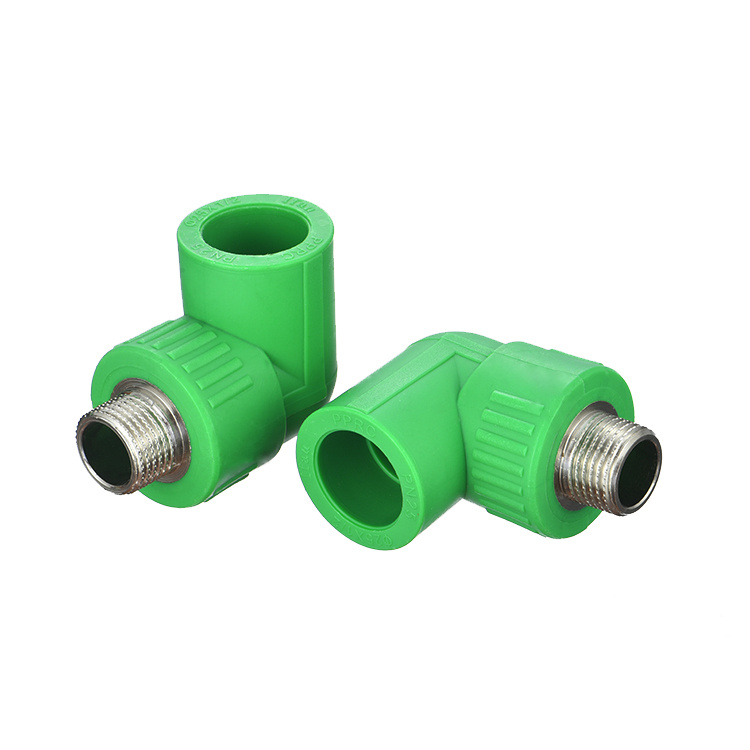
4. Easy Installation
The ease of installation is another reason PPR fittings are rapidly replacing traditional metal fittings. They are lightweight, making them easier to handle and transport. Installation is also quicker compared to other materials, as PPR pipes and fittings can be joined using a simple fusion welding process. This results in strong, leak-free joints without the need for extra sealing materials like glues or adhesives.
5. Cost-Effectiveness
PPR fittings are generally more affordable than their metal counterparts. The cost of both the material and installation is lower, making them an attractive option for both residential and commercial plumbing systems. Moreover, their durability and low maintenance costs contribute to long-term savings, making them a wise investment for any plumbing project.
6. Environmental Benefits
PPR fittings are also more environmentally friendly compared to other plumbing materials. Since they are made from a recyclable material, PPR fittings contribute to reducing plastic waste. Additionally, their energy efficiency and longevity mean fewer resources are required for repairs and replacements, further reducing their environmental footprint.
7. No Leaks or Corrosion
Unlike traditional metal pipes, which are prone to leaks and corrosion, PPR fittings provide a leak-proof connection that is highly resistant to damage. The fusion welding process ensures that there are no weak points in the plumbing system, significantly reducing the likelihood of leaks. This feature is essential for preventing water damage and improving the overall safety of the plumbing system.
8. Aesthetics
PPR pipes and fittings are available in a wide range of sizes and configurations, allowing for flexibility in plumbing system design. They are smooth, clean, and aesthetically pleasing, blending well with modern construction projects. This gives them an edge over older materials that may be unsightly or difficult to conceal.
Applications of PPR Fittings
PPR fittings are widely used in various applications, including:
– Residential Plumbing: PPR fittings are commonly used in both cold and hot water supply systems in residential buildings. They are ideal for use in kitchens, bathrooms, and other areas where water supply is required.
– Industrial Use: PPR fittings are also used in industries requiring high chemical resistance and durability. They are suitable for factories and plants dealing with chemicals, pharmaceuticals, or food processing.
– Heating Systems: Due to their high-temperature resistance, PPR fittings are often used in underfloor heating systems, radiators, and hot water circulation.
– Water Treatment Systems: PPR fittings are increasingly used in water treatment systems due to their resistance to scale build-up, making them ideal for areas with hard water.
Why PPR Fittings Are the Future of Plumbing
The future of plumbing is increasingly leaning toward materials that offer not only durability and cost-efficiency but also environmental sustainability. PPR fittings check all these boxes, making them a natural choice for modern plumbing projects.
As plumbing technology continues to evolve, the demand for PPR fittings will likely increase, replacing older, less efficient materials. Their impressive resistance to chemicals, heat, and corrosion, combined with their ease of installation, makes them the go-to choice for contractors and homeowners alike.
Frequently Asked Questions (FAQs)
1. How long do PPR fittings last?
PPR fittings are highly durable and can last up to 50 years or more, depending on the installation and maintenance conditions.
2. Can PPR fittings be used for both hot and cold water systems?
Yes, PPR fittings are ideal for both hot and cold water systems, as they can withstand temperatures up to 95°C (203°F).
3. Are PPR fittings environmentally friendly?
Yes, PPR fittings are made from recyclable materials, and their long lifespan means fewer replacements, contributing to environmental sustainability.
4. Can PPR fittings be installed without special equipment?
No, PPR fittings require a fusion welding machine for proper installation, but the process is quick and easy compared to other materials.
5. Are PPR fittings resistant to corrosion?
Yes, PPR fittings are highly resistant to corrosion, unlike traditional metal pipes, making them ideal for use in areas with harsh water conditions.
Related products
-
PPR Fittings
Green Plastic PPR Material Fittings
-
PPR Fittings
Plastic PPR Water Fittings


